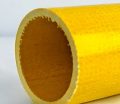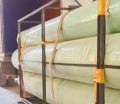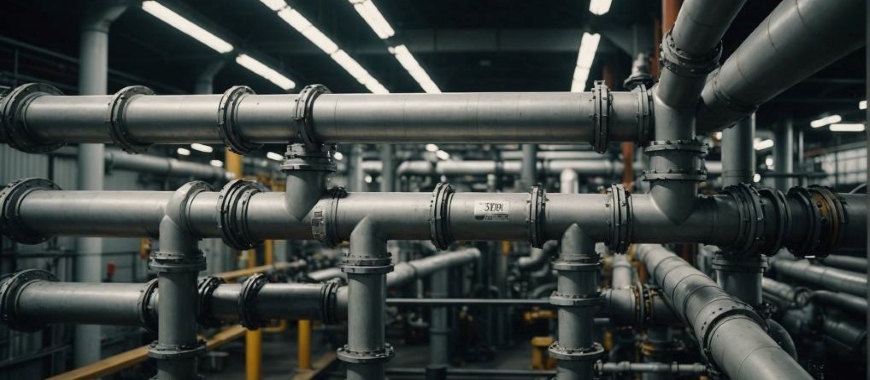
FRP pipe thermal expansion refers to the dimensional changes that FRP pipes undergo when exposed to varying temperatures. This thermal expansion can affect the overall performance of the pipe system, particularly in industrial environments where temperature fluctuations are common. The expansion occurs due to the resin and fiberglass materials responding to heat, which can cause pipes to expand or contract. Managing FRP pipe thermal expansion is crucial for preventing stress or damage to the pipe, ensuring long-term durability. GangLong Fiberglass offers solutions designed to minimize the effects of thermal expansion, maintaining the integrity of FRP piping systems in demanding conditions. FRP pipe thermal expansion refers to the length or volume change in fiberglass pipes due to temperature shifts, with a typical CTE of 12.0E-6 in/in/°F.
Simplifying Your Life: Key Functionalities
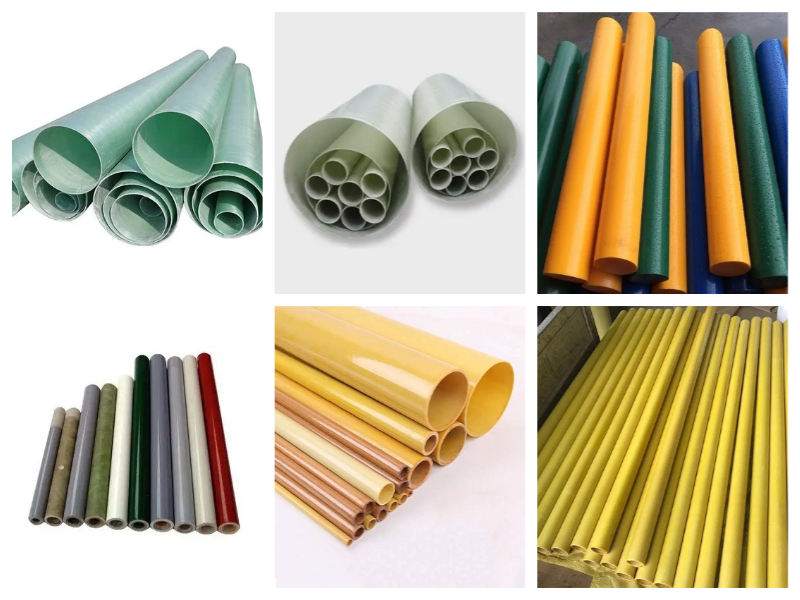
| Attributes | Details |
|---|---|
| Place of Origin | Hebei, China |
| Brand Name | GangLong Fiberglass |
| Product Name | FRP Pipe |
| Application | Liquid and Water |
| Technology | Pultrusion |
| Surface Treatment | Smooth |
| Processing Services | Forming, Welding, Cutting, Uncoiling |
| Material | Fiberglass |
| Thickness | Customizable |
| Color | Customizable |
| Diameter | Customizable |
| Shape | Customizable |
| Length | Customizable |
| Size | Customizable |
| Logo | Customized Logo |
| Certificate | ISO9001 |
| Features | Insulation, High Temperature Resistance, Excellent Corrosion Resistance, High Efficiency, Lightweight, Versatile, Strong |
| Minimum Order Quantity | 10 Pieces |
| Packing Details | Wooden Packaging, Suitable for Sea Shipping |
| Supply Capacity | 200 Pieces per Day |
What is FRP Pipe Thermal Expansion?
FRP pipe thermal expansion refers to the change in length or volume of fiberglass-reinforced plastic (FRP) pipes when exposed to temperature fluctuations. Like all materials, FRP pipes expand when heated and contract when cooled due to the molecular structure of the fiberglass and resin used. The extent of expansion or contraction is determined by the thermal expansion coefficient (CTE) of the material, which defines the amount of size change per degree of temperature change. For FRP pipes, the typical CTE ranges from 10 to 20 x 10^-6 per degree Fahrenheit, meaning a one-foot length of pipe will expand or contract by 0.01 to 0.02 inches for every degree Fahrenheit of temperature change.
While the thermal expansion of FRP pipes is relatively smaller compared to metals, it still requires careful design to prevent issues like stress, cracking, or misalignment in piping systems. This is especially crucial in industries where temperature fluctuations are common, such as chemical processing, water treatment, and oil and gas.
To manage FRP pipe thermal expansion, it is important to incorporate design elements like expansion joints, pipe supports, and the appropriate selection of materials to accommodate movement. Properly addressing thermal expansion ensures the longevity and structural integrity of the piping system, helping to prevent costly repairs or system failure over time. FRP pipe thermal expansion refers to the change in length or volume of fiberglass-reinforced plastic (FRP) pipes when exposed to temperature variations.
GangLong Fiberglass provides high-quality FRP pipes designed to handle thermal expansion, offering tailored solutions to meet the specific needs of industries with demanding temperature control requirements. GangLong Fiberglass specializes in providing FRP pipes engineered to handle thermal expansion in various industrial environments, offering reliable solutions for projects in sectors like chemical processing, water treatment, and oil and gas.
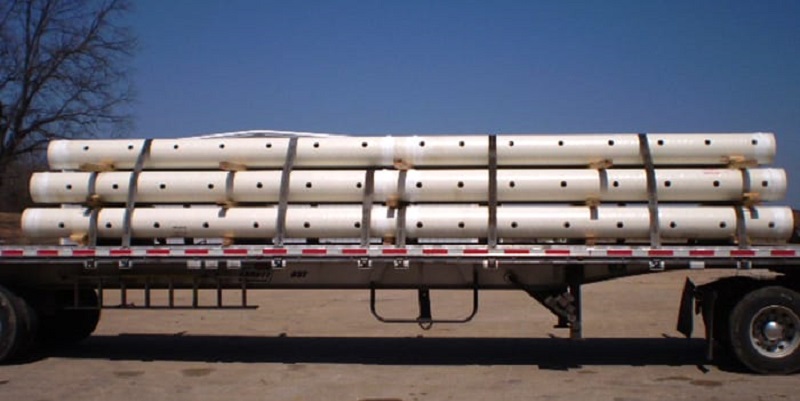
How about Temperature Changes and Their Effect on FRP Pipe Thermal Expansion?
The frp pipe thermal expansion process is directly influenced by the temperature fluctuations the pipe is exposed to. In many industrial settings, such as chemical processing plants or outdoor pipelines, temperature can vary significantly over the course of a day, or as part of the operational process.
Heating: When FRP pipes are exposed to elevated temperatures, the material expands. In systems where high-temperature fluids are transported, this expansion can place stress on the pipe joints, supports, and connections. For instance, in a chemical processing plant where heated corrosive liquids are transferred, pipes may need to accommodate significant thermal expansion to prevent mechanical stress.
Cooling: Conversely, when temperatures drop, FRP pipes contract. In cold climates or when transporting chilled fluids, pipes may shrink, potentially leading to misalignment or gaps between joints. The shrinking of pipes due to frp pipe thermal expansion must be carefully accounted for during the design phase, particularly in applications where temperature swings are frequent or extreme.
GangLong Fiberglass offers FRP pipe solutions that are specifically designed to manage both expansion and contraction in high-temperature and low-temperature environments, providing stability and durability under varying conditions.
What is the Thermal Expansion Coefficient in FRP Pipe Thermal Expansion?
The thermal expansion coefficient is a material property that indicates how much a material will expand or contract per degree of temperature change. In frp pipe thermal expansion, this coefficient plays a crucial role in determining how much the pipe will change in length or diameter when exposed to temperature variations.
For FRP pipes, the thermal expansion coefficient is generally lower than that of many metals, such as steel, but still significant enough to require careful consideration in system design. The exact coefficient can vary depending on the type of resin and fiberglass reinforcement used in the pipe. Typically, FRP pipes have a coefficient of thermal expansion ranging from 10 to 20 x 10^-6 per degree Fahrenheit, which means they expand approximately 0.01 to 0.02 inches for every foot of pipe per 100°F change in temperature.
GangLong Fiberglass provides detailed specifications for the thermal expansion properties of its FRP pipes, helping contractors design systems that can accommodate the expected expansion and contraction.
Managing FRP Pipe Thermal Expansion in Industrial Applications
To ensure that frp pipe thermal expansion does not compromise the integrity of the system, proper management strategies must be implemented. This includes the use of expansion joints, flexible connectors, and proper support systems to accommodate changes in pipe length and diameter without introducing stress into the system.
Expansion Joints: Expansion joints are commonly used to absorb the movement caused by thermal expansion. These flexible joints allow the pipe to expand and contract without causing stress to the connections or supports. Expansion joints are particularly useful in long, straight runs of FRP pipe, where thermal expansion can result in significant changes in length.
Flexible Connectors: In addition to expansion joints, flexible connectors can be used to accommodate frp pipe thermal expansion. These connectors are typically made from materials that can flex and move with the pipe, reducing the risk of leaks or damage at connection points.
Proper Support Systems: Supporting the pipe at regular intervals is essential for managing frp pipe thermal expansion. Pipe supports must be designed to allow the pipe to move freely as it expands or contracts, preventing undue stress on the system. Additionally, the supports themselves should be able to handle the thermal changes without transferring stress to the pipe.
GangLong Fiberglass provides expansion joints, flexible connectors, and other accessories designed to accommodate thermal expansion, ensuring that FRP piping systems remain safe and functional over time.
Steel vs. FRP Pipe Thermal Expansion
When comparing the thermal expansion characteristics of FRP and steel pipes, several differences become apparent. The thermal expansion coefficient of steel is significantly lower than that of FRP, but steel also has its own set of challenges when it comes to handling temperature changes.
Steel Pipes: Steel pipes have a thermal expansion coefficient of approximately 6.5 x 10^-6 per degree Fahrenheit, which is lower than that of FRP. This means that steel pipes expand less than FRP pipes when exposed to the same temperature changes. However, steel is more susceptible to corrosion, which can weaken the pipe over time, especially in environments where temperature changes are combined with exposure to chemicals or moisture.
FRP Pipes: In contrast, frp pipe thermal expansion is greater than that of steel, but FRP has the advantage of being highly resistant to corrosion, chemicals, and environmental factors. This makes FRP pipes a preferred choice in industries where both temperature variation and chemical resistance are crucial.
Both materials have their advantages, and the choice between steel and FRP depends largely on the specific conditions of the project, such as the temperature range, the nature of the transported fluid, and the environmental exposure. GangLong Fiberglass offers detailed guidance on selecting the appropriate material for any industrial application, ensuring that the chosen piping system can handle both thermal expansion and environmental challenges.
Long-Term Considerations for FRP Pipe Thermal Expansion
Over time, the effects of frp pipe thermal expansion can accumulate, potentially leading to fatigue in the piping system if not properly managed. Contractors and engineers must consider the long-term effects of temperature changes and how they impact the structural integrity of the system.
Fatigue and Stress: Repeated cycles of expansion and contraction can cause fatigue in the material, particularly at joints and support points. To mitigate this, it is essential to use high-quality materials that are designed to withstand these stresses. Properly designed expansion joints and flexible supports can significantly extend the life of the system by reducing the cumulative effects of thermal expansion.
Routine Inspection: Regular inspections are also necessary to ensure that the piping system continues to perform as expected. Checking for signs of stress, misalignment, or leaks can help identify areas where the effects of thermal expansion may be causing issues. In many cases, maintenance or minor adjustments to the support system can prevent major problems from developing.
GangLong Fiberglass offers comprehensive maintenance plans and technical support to help manage the long-term effects of frp pipe thermal expansion, ensuring that systems remain safe and reliable for years to come.
The Key of Proper Design in FRP Pipe Thermal Expansion Management
Proper design is crucial in managing frp pipe thermal expansion. Engineers must carefully calculate the expected expansion and contraction of the pipe based on the operating temperature range and select the appropriate materials and components to handle these changes, as outlined in the Perma Pipe FRP pipe operating manual.
By choosing the right resins, pipe dimensions, and expansion accessories, contractors can ensure that their FRP piping systems are equipped to manage thermal expansion without compromising performance. GangLong Fiberglass works with contractors and engineers to design systems that account for all aspects of thermal expansion, from material selection to support systems, ensuring a long-lasting and efficient solution for industrial piping needs.
FRP Pipe Thermal Expansion: Key Considerations
FRP pipe thermal expansion is a critical factor to consider in industries where fiberglass reinforced plastic (FRP) piping systems are exposed to temperature fluctuations. FRP pipes are widely used in sectors such as chemical processing, water treatment, and oil and gas due to their corrosion resistance and strength. However, when these pipes are subjected to heat or cold, they experience expansion and contraction, which can affect the integrity and performance of the piping system. Understanding frp pipe thermal expansion and managing it effectively is essential for ensuring the long-term reliability of FRP-based infrastructures. GangLong Fiberglass specializes in providing solutions that address the challenges posed by thermal expansion, ensuring durability in a wide range of applications.
FRP Coefficient of Thermal Expansion Explained
The coefficient of thermal expansion (CTE) is a crucial property that measures how much a material expands or contracts with a change in temperature. For FRP pipes, the CTE is particularly important because it dictates how the material will behave when exposed to heat or cold. FRP pipes are composed of fiberglass reinforcement embedded in a resin matrix, and both components play a role in the overall thermal expansion behavior. For example, clear epoxy resin for FRP pipe generally has lower thermal expansion compared to polyester or vinyl ester resins, making it more stable in environments where temperature changes are frequent.
Typically, the CTE for FRP pipes ranges from 5 to 15 x 10⁻⁶/°C, depending on the type of resin used and the fiberglass formulation. The resin type significantly influences the thermal expansion properties—epoxy resins generally have a lower CTE compared to polyester or vinyl ester resins, making epoxy-based FRP pipes more stable in environments with frequent temperature changes. On the other hand, fiberglass reinforcement helps to minimize expansion, adding strength and rigidity to the material, which counteracts the softening effects of the resin at higher temperatures.
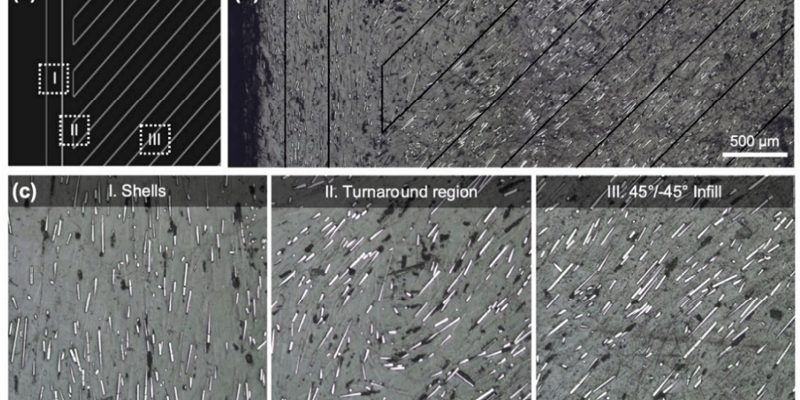
The relatively low CTE of FRP pipes compared to metals like steel or aluminum makes them more stable under varying temperature conditions. This characteristic is particularly advantageous in industrial applications where pipes are exposed to extreme temperature fluctuations, such as in chemical plants, power generation facilities, or oil and gas industries. In such applications, FRP pipes offer better resistance to thermal stress, reducing the risk of deformation, cracking, or failure due to excessive movement.
When designing piping systems that will experience thermal cycling, it is essential to consider the CTE of the material. Failing to account for thermal expansion could lead to mechanical stress and long-term damage to the system. To ensure reliable performance, GangLong Fiberglass provides FRP pipes with optimized CTE values, designed to perform consistently under demanding temperature conditions. These pipes are engineered to withstand temperature changes without compromising structural integrity, offering a durable and long-lasting solution for various industrial applications.
Using a Thermal Expansion Calculator for FRP Pipes
To manage frp pipe thermal expansion effectively, engineers often use a thermal expansion calculator. This tool allows users to predict how much an FRP pipe will expand or contract based on the temperature difference it is exposed to and the pipe’s CTE. The formula commonly used to calculate thermal expansion is:
ΔL = L₀ x α x ΔT
Where:
- ΔL = change in length of the pipe
- L₀ = original length of the pipe
- α = coefficient of thermal expansion
- ΔT = temperature change
For example, if a 100-meter FRP pipe with a CTE of 10 x 10⁻⁶/°C is subjected to a 50°C temperature increase, the expected length change would be:
ΔL = 100m x 10 x 10⁻⁶/°C x 50°C = 0.05 meters (5 cm)
This calculation shows that the pipe will expand by 5 cm due to the temperature increase. Understanding these dimensional changes is essential for the proper design and installation of expansion joints or other compensatory mechanisms within the piping system. GangLong Fiberglass offers expert consultation on using thermal expansion calculators to ensure that frp pipe thermal expansion is accounted for during system design.
Steel vs. FRP Pipe Thermal Expansion
Steel is another commonly used material in industrial piping systems, but it behaves differently from FRP when exposed to temperature changes. The CTE of steel is around 12 x 10⁻⁶/°C, which is closer to FRP than aluminum but still poses different challenges. Steel’s higher density and thermal conductivity mean that it heats up and cools down more quickly than FRP, leading to faster expansion and contraction.
In applications where thermal expansion must be minimized, FRP offers advantages over steel. The combination of low thermal expansion and high corrosion resistance makes FRP an ideal material for environments where pipes are exposed to chemicals and varying temperatures. Additionally, FRP is much lighter than steel, which reduces the overall weight of the piping system and lowers installation costs. GangLong Fiberglass manufactures FRP pipes that meet the demanding requirements of industrial systems while minimizing the risks associated with thermal expansion.
Key Factors Affecting FRP Pipe Thermal Expansion
Several factors influence frp pipe thermal expansion, including the type of resin used, the proportion of fiberglass reinforcement, and the overall temperature range the pipe is exposed to. Understanding these factors is essential for ensuring that the piping system can accommodate any dimensional changes caused by thermal expansion.
Resin Type
The choice of resin plays a critical role in determining the thermal expansion characteristics of FRP pipes. Epoxy resins, for example, have a lower CTE than polyester or vinyl ester resins. As a result, FRP pipes made with epoxy resins are more dimensionally stable in environments where temperature fluctuations are frequent. GangLong Fiberglass offers various resin options to suit different industrial needs, ensuring that the correct resin is used for each specific application.
Fiberglass Reinforcement
The fiberglass content within the pipe also affects thermal expansion. The higher the fiberglass content, the lower the CTE of the pipe, as fiberglass has a very low expansion rate compared to the resin. This means that increasing the fiberglass content in FRP pipes can help to reduce the overall thermal expansion, making the pipe more stable under temperature changes.
Operating Temperature Range
The temperature range that the FRP pipe is exposed to also impacts thermal expansion. Pipes that operate in environments with extreme temperature fluctuations will experience greater expansion and contraction than those in more stable environments. It is important to account for this when designing the piping system, as failure to do so could result in excessive stress and damage to the pipes.
GangLong Fiberglass provides customized FRP piping solutions that take these factors into account, ensuring that frp pipe thermal expansion is minimized and managed effectively in all applications.
Reducing Stress Caused by FRP Pipe Thermal Expansion
To mitigate the effects of frp pipe thermal expansion, several strategies can be employed. One common solution is to install expansion joints, which allow the pipe to expand and contract without causing stress on the system. These joints absorb the dimensional changes, preventing damage to the pipe and surrounding structures.
Another strategy is to use anchors or guides to control the direction of expansion. By strategically placing these supports, engineers can ensure that the pipe expands in a controlled manner, reducing the risk of deformation or failure. GangLong Fiberglass offers a range of expansion joints and support systems designed specifically for managing thermal expansion in FRP piping systems.
FRP Pipe Thermal Expansion Key Considerations for Industrial Applications
FRP pipe thermal expansion refers to the change in size (either length or diameter) of fiberglass-reinforced plastic (FRP) pipes in response to temperature fluctuations. As with all materials, when FRP pipes are subjected to heat, they expand, and when exposed to cooler temperatures, they contract. These changes must be carefully considered during the design and installation of FRP piping systems to ensure they can withstand the effects of temperature variations without compromising structural integrity or operational efficiency. Understanding how frp pipe thermal expansion affects a system is critical for engineers and contractors working on projects where temperature control and stability are essential.
GangLong Fiberglass specializes in the manufacturing of high-quality FRP pipes designed to manage thermal expansion effectively, providing solutions for industries such as water treatment, chemical processing, and power generation.
Top Challenges Contractors Face in Securing FRP Pipes Tenders
Managing FRP Pipe Thermal Expansion in High-Temperature Environments
Temperature variations, especially in industrial settings, can lead to significant thermal expansion or contraction in FRP pipes. To manage frp pipe thermal expansion effectively, systems must be designed with features that allow the pipe to expand and contract without causing mechanical stress or failure.
Expansion Joints: Expansion joints are flexible components placed between sections of FRP piping to absorb the movement caused by thermal expansion. These joints are designed to allow the pipe to expand without transferring stress to the pipe walls, supports, or surrounding structures. Expansion joints are especially useful in long runs of piping, where thermal expansion can cause significant changes in pipe length.
Flexible Connectors: Flexible connectors can also be used to manage frp pipe thermal expansion by accommodating the movement caused by temperature fluctuations. These connectors are typically made of materials that allow slight flexibility, which prevents damage to pipe joints and fittings as the pipe expands or contracts.
Support Systems: Properly designed support systems are essential for managing the effects of frp pipe thermal expansion. Pipe supports must be spaced appropriately to allow the pipe to expand and contract freely without causing bending or sagging. Supports that restrict movement can lead to increased stress on the pipe, resulting in cracking or misalignment. GangLong Fiberglass works with contractors to ensure that support systems are designed to handle thermal expansion in a wide range of applications.
The Key of Material Selection in FRP Pipe Thermal Expansion Management
The choice of materials used in FRP pipes directly impacts how they respond to thermal expansion. The thermal expansion coefficient of FRP pipes can vary depending on the type of resin and fiberglass reinforcement used in their construction. Selecting the right materials is critical to ensuring that the pipe can withstand the expected temperature fluctuations without experiencing excessive expansion or contraction.
Resin Types: The type of resin used in the manufacture of FRP pipes plays a significant role in determining their thermal expansion properties. For example, vinyl ester resins tend to have lower thermal expansion coefficients than polyester resins, making them more suitable for applications where temperature stability is essential. Epoxy resins, known for their high strength and durability, also offer good resistance to thermal expansion, making them ideal for high-temperature environments.
Fiberglass Reinforcement: The amount and type of fiberglass used in FRP pipes also influence their thermal expansion behavior. Pipes with higher fiberglass content tend to have lower thermal expansion coefficients because the fiberglass fibers help to counteract the expansion of the resin matrix. This makes high-fiber-content FRP pipes particularly suitable for industrial applications where temperature changes are frequent or extreme.
GangLong Fiberglass offers a range of FRP pipe products made with different resin and fiberglass formulations to meet the specific thermal expansion requirements of various industries.
Long-Term Effects of FRP Pipe Thermal Expansion
Over time, the repeated expansion and contraction caused by temperature changes can lead to stress in FRP pipes, especially at joints, supports, and fittings. It is important to account for the long-term effects of frp pipe thermal expansion to prevent fatigue and ensure the longevity of the piping system.
Material Fatigue: Repeated cycles of expansion and contraction can cause material fatigue, particularly in areas where the pipe is constrained or supported. This can lead to cracks, deformation, or even failure of the pipe if not properly managed. To mitigate the effects of material fatigue, engineers must design systems with appropriate expansion joints, flexible connectors, and supports that allow for free movement of the pipe.
Inspection and Maintenance: Regular inspection and maintenance of FRP piping systems are essential for identifying potential issues caused by frp pipe thermal expansion. Over time, joints, supports, and connections may require adjustment or replacement to accommodate changes in the pipe’s size and shape. Conducting routine inspections can help prevent leaks, misalignment, and other issues that may arise from thermal expansion.
GangLong Fiberglass offers comprehensive maintenance plans and technical support to ensure that FRP piping systems remain safe and operational over their entire lifespan.
The Importance of Proper Design in Managing FRP Pipe Thermal Expansion
Effective management of frp pipe thermal expansion begins with proper design. Engineers must carefully calculate the expected expansion and contraction of the pipe based on the operating temperature range, pipe length, and material properties. By incorporating the right materials, expansion joints, and support systems, contractors can create piping systems that are capable of handling temperature variations without experiencing stress or failure.
Incorporating expansion joints and other flexible components into the design allows the piping system to absorb the movement caused by temperature fluctuations, preventing damage to the pipes or surrounding structures. In addition, selecting materials with lower thermal expansion coefficients, such as those offered by GangLong Fiberglass, helps to minimize the overall movement of the pipes, further reducing the risk of stress and fatigue.
How About Practical Applications of FRP Pipe Thermal Expansion?
In practical applications, frp pipe thermal expansion is a critical factor in many industries. Piping systems that carry hot fluids, such as those used in chemical processing or power generation, are particularly susceptible to thermal expansion. In these environments, the ability to accommodate expansion and contraction is essential for maintaining the integrity of the system and ensuring continuous, reliable operation.
Chemical Processing: In chemical plants, FRP pipes are often used to transport highly corrosive fluids at elevated temperatures. The frp pipe thermal expansion that occurs in these systems must be carefully managed to prevent leaks or ruptures, which could lead to costly downtime or environmental contamination.
Power Generation: In power plants, FRP pipes are commonly used for cooling water systems and other processes that involve temperature fluctuations. By managing thermal expansion with the appropriate design features, power generation facilities can ensure that their FRP piping systems remain functional and efficient over the long term.
GangLong Fiberglass provides customized FRP pipe solutions for these and other industries, offering products designed to withstand the effects of thermal expansion and perform reliably in high-temperature environments.
HDPE vs FRP Pipe: Which is Best for Your Project?
Reducing the Impact of Thermal Expansion in FRP Piping Systems
Managing frp pipe thermal expansion is essential for ensuring the longevity and efficiency of piping systems. There are several methods that can be employed to reduce the impact of thermal expansion and prevent damage to the pipes.
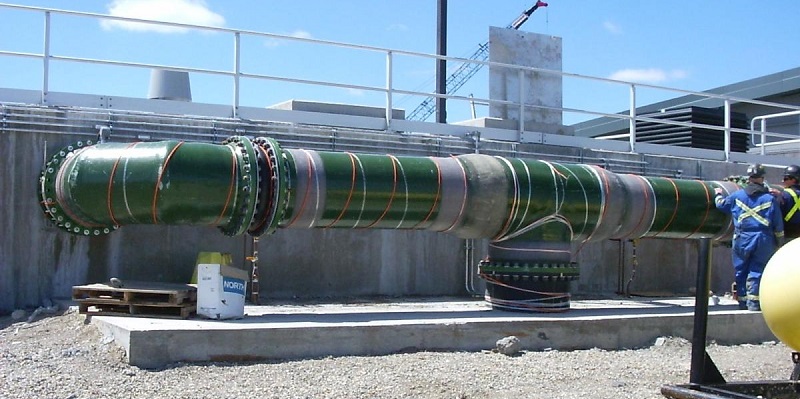
Expansion Joints
As mentioned earlier, expansion joints are a common solution for managing thermal expansion in FRP piping systems. These joints are designed to absorb the movement caused by expansion and contraction, preventing stress on the pipe and surrounding structures. By installing expansion joints at key points in the system, engineers can ensure that the piping system can handle thermal expansion without experiencing deformation or failure.
Anchors and Guides
Another strategy for managing thermal expansion is the use of anchors and guides. By carefully positioning these supports, engineers can control the direction in which the pipe expands, preventing it from moving in unintended directions. This helps to maintain the integrity of the piping system and ensures that any expansion occurs in a controlled manner.
Selecting the Right Materials
Choosing the right materials is also crucial for reducing the impact of thermal expansion. By selecting resins and fiberglass reinforcements with lower CTEs, engineers can minimize the extent of thermal expansion in the piping system. GangLong Fiberglass offers a wide range of materials with optimized thermal expansion properties, ensuring that clients can find the right solution for their specific needs.
Consider When Determining FRP Pipe Pressure Rating
FAQs about Frp Pipe Thermal Expansion
The coefficient of thermal expansion (CTE) of FRP (Fiberglass Reinforced Plastic) typically ranges between 5 to 15 x 10⁻⁶/°C, depending on the specific composition of the material. This value is lower than many common metals like steel, which makes FRP a more stable material in applications where temperature fluctuations are expected. The exact CTE depends on the type of resin used, the proportion of fiberglass reinforcement, and the overall thickness of the FRP structure.
The resin type plays a significant role in determining the thermal expansion characteristics. For example, epoxy-based FRP tends to have a lower CTE than polyester-based FRP. The fiberglass content within the material also helps limit thermal expansion, as fiberglass itself has a much lower expansion rate than the resin matrix.
In practical applications, the low CTE of FRP means that it maintains its dimensional integrity better than other materials, especially in environments that experience frequent temperature changes. This property makes FRP an excellent choice for industrial piping, storage tanks, and other structures exposed to both heat and cold.
Yes, FRP (Fiberglass Reinforced Plastic) does expand when exposed to heat, although the rate of expansion is lower compared to many metals and some plastics. FRP is composed of fiberglass reinforcement and a polymer matrix, and while it has excellent thermal resistance properties, it still experiences thermal expansion. The extent of expansion depends on the specific resin and fiberglass combination used in the FRP material.
When FRP is exposed to high temperatures, the polymer matrix softens slightly, leading to minor expansion. However, compared to materials like steel, FRP has a lower coefficient of thermal expansion, making it more dimensionally stable in fluctuating temperatures. This property is one of the reasons why FRP is commonly used in environments with varying temperatures, such as chemical processing plants or outdoor pipelines, where dimensional stability is crucial.
It is important to note that prolonged exposure to very high temperatures (beyond the material’s limits) can lead to weakening of the resin matrix, impacting the overall strength of the FRP structure.
Fiberglass, a key component of FRP (Fiberglass Reinforced Plastic), has a relatively low coefficient of thermal expansion. The thermal expansion of pure fiberglass typically falls in the range of 5 to 10 x 10⁻⁶/°C, making it more dimensionally stable than many other materials. When combined with resins in FRP, this low thermal expansion rate helps create a composite material that is both strong and resistant to deformation from temperature changes.
Fiberglass itself does not expand much when exposed to heat, which is one of the reasons it is widely used as reinforcement in thermoset resin systems like FRP. The low expansion rate ensures that FRP structures, such as pipes and tanks, maintain their shape and functionality, even when exposed to fluctuating or elevated temperatures.
In industrial applications, the thermal stability of fiberglass makes it a valuable material in environments where temperature control is critical. Its low expansion properties, combined with its strength and corrosion resistance, make fiberglass an ideal choice for reinforcing materials used in harsh environmental conditions.
The coefficient of thermal expansion (CTE) for FRP (Fiberglass Reinforced Plastic) pipes varies depending on the specific resin and fiber used, but generally, it is lower than that of metals such as steel or aluminum. The CTE for FRP pipes typically ranges from 5 to 15 × 10⁻⁶ /°C (micrometers per meter per degree Celsius). This means that FRP pipes expand or contract at a much slower rate when exposed to temperature changes compared to metal pipes. This property makes FRP pipes suitable for systems that experience temperature fluctuations, such as in industrial applications. The lower thermal expansion rate of FRP contributes to its dimensional stability, reducing the risks of warping, bending, or failure under varying temperature conditions, which is particularly useful in systems where precise fluid flow and structural integrity are required.
The thermal conductivity of FRP (Fiberglass Reinforced Plastic) pipes is relatively low compared to metals, making them an effective material for insulation in piping systems. Typical thermal conductivity values for FRP pipes are around 0.2 to 0.4 W/m·K. This low thermal conductivity indicates that FRP pipes are not efficient at transferring heat, which is beneficial in applications where it is important to maintain the temperature of the fluid being transported. For example, in district heating or cooling systems, the insulation properties of FRP pipes help minimize energy loss, maintaining the temperature of the fluid within the required range. Additionally, FRP pipes can be used in systems that require a barrier to heat flow, helping to prevent unwanted heat exchange with the surrounding environment, which further enhances energy efficiency.
FRP (Fiberglass Reinforced Plastic) materials have unique thermal properties that make them suitable for a wide range of applications. Key thermal properties include low thermal conductivity, which reduces heat transfer, and a moderate coefficient of thermal expansion that prevents significant dimensional changes due to temperature fluctuations. FRP is also resistant to thermal degradation; the resin matrix in FRP pipes can typically withstand continuous temperatures of up to 100°C (212°F), with some specialized versions tolerating higher temperatures up to 200°C (392°F). The low heat retention properties of FRP ensure that it maintains thermal stability, preventing excessive heat absorption or loss. These thermal properties, combined with high insulation and strength-to-weight ratio, make FRP ideal for use in applications such as fluid transport, chemical processing, and areas exposed to varying temperature conditions.
Yes, FRP (Fiberglass Reinforced Plastic) is heat-resistant, but its resistance depends on the specific type of resin used. FRP materials, especially those made with thermosetting resins like polyester, vinyl ester, or epoxy, have good heat resistance properties. Standard FRP pipes can typically handle continuous operating temperatures of up to 100°C (212°F), while some specialized high-temperature FRP materials can withstand temperatures of up to 200°C (392°F). FRP’s heat resistance is particularly advantageous in applications where high temperatures might otherwise cause damage to traditional piping materials like metals or plastics. However, it’s important to note that extreme temperature exposure beyond the specified limits can cause the resin to degrade over time, reducing the material’s mechanical properties. Therefore, while FRP pipes are heat-resistant, their use in high-temperature applications should be within the recommended limits for optimal performance.
Materials with the highest thermal expansion are typically metals, with aluminum and steel among the highest. Aluminum has a very high coefficient of thermal expansion (CTE) of around 22 to 24 × 10⁻⁶ /°C, making it one of the most thermally expansive materials. This means that aluminum expands significantly when heated and contracts when cooled. Metals like titanium and steel also exhibit relatively high CTE values, although they are lower than aluminum. In contrast, composite materials like FRP (Fiberglass Reinforced Plastic) have much lower thermal expansion rates, which is one of the reasons why FRP is preferred for certain piping applications. Materials with high thermal expansion require special design considerations to accommodate changes in length and shape, which can be problematic in temperature-sensitive systems.
Yes, fiberglass does expand with heat, but at a much lower rate than metals or other materials. The coefficient of thermal expansion (CTE) of fiberglass is relatively low, typically around 5 to 7 × 10⁻⁶ /°C, meaning that it expands only slightly when exposed to temperature increases. While fiberglass will experience some degree of thermal expansion, this effect is minimal compared to materials like steel or aluminum. This is an advantage in applications where dimensional stability is important, as it reduces the risks of warping, bending, or failure due to temperature fluctuations. The low thermal expansion properties of fiberglass are one of the reasons it is used in applications like FRP pipes, where maintaining the integrity and function of the pipe under varying temperatures is crucial.

As the editor of GangLong Fiberglass, I have years of experience and in-depth research, focusing on cable tray products, fiberglass solutions, and grille systems. I incorporate years of industry insights and practical experience into every content, committed to promoting the progress of the industry. At GangLong Fiberglass, my commitment is reflected in every product, from innovative cable trays to durable fiberglass solutions and sturdy grille systems. As an authoritative voice in the industry, my goal is to provide valuable information to professionals and businesses and promote forward-looking solutions.

